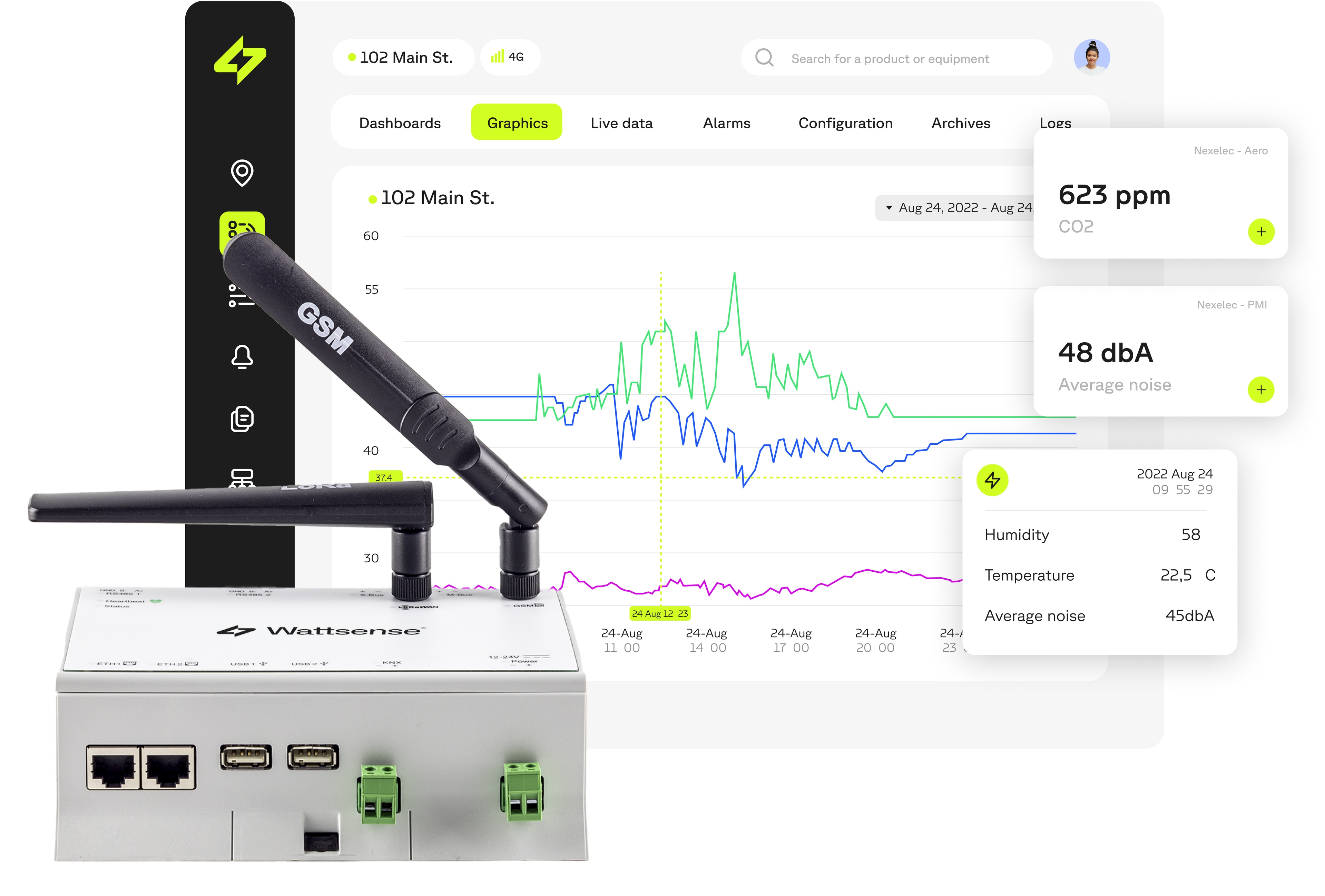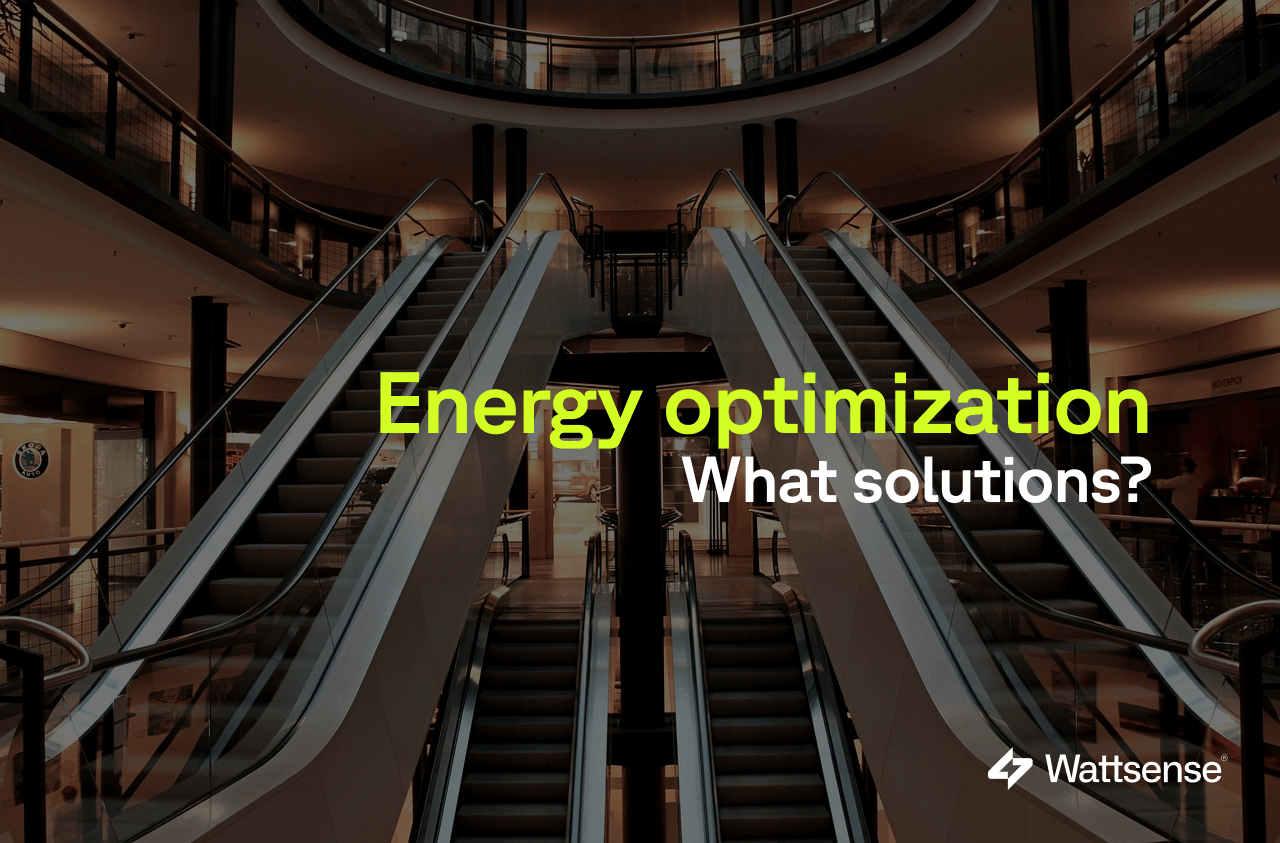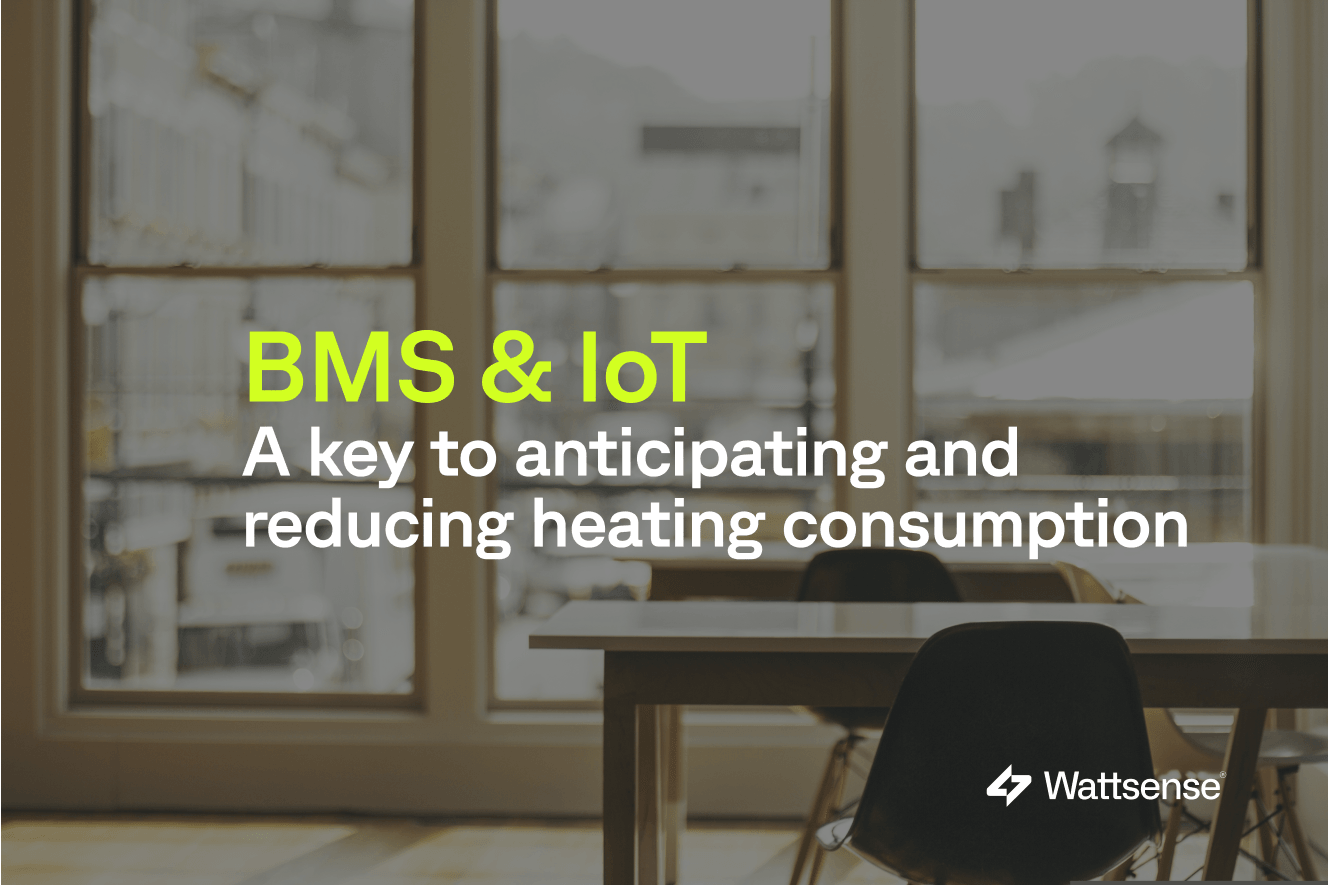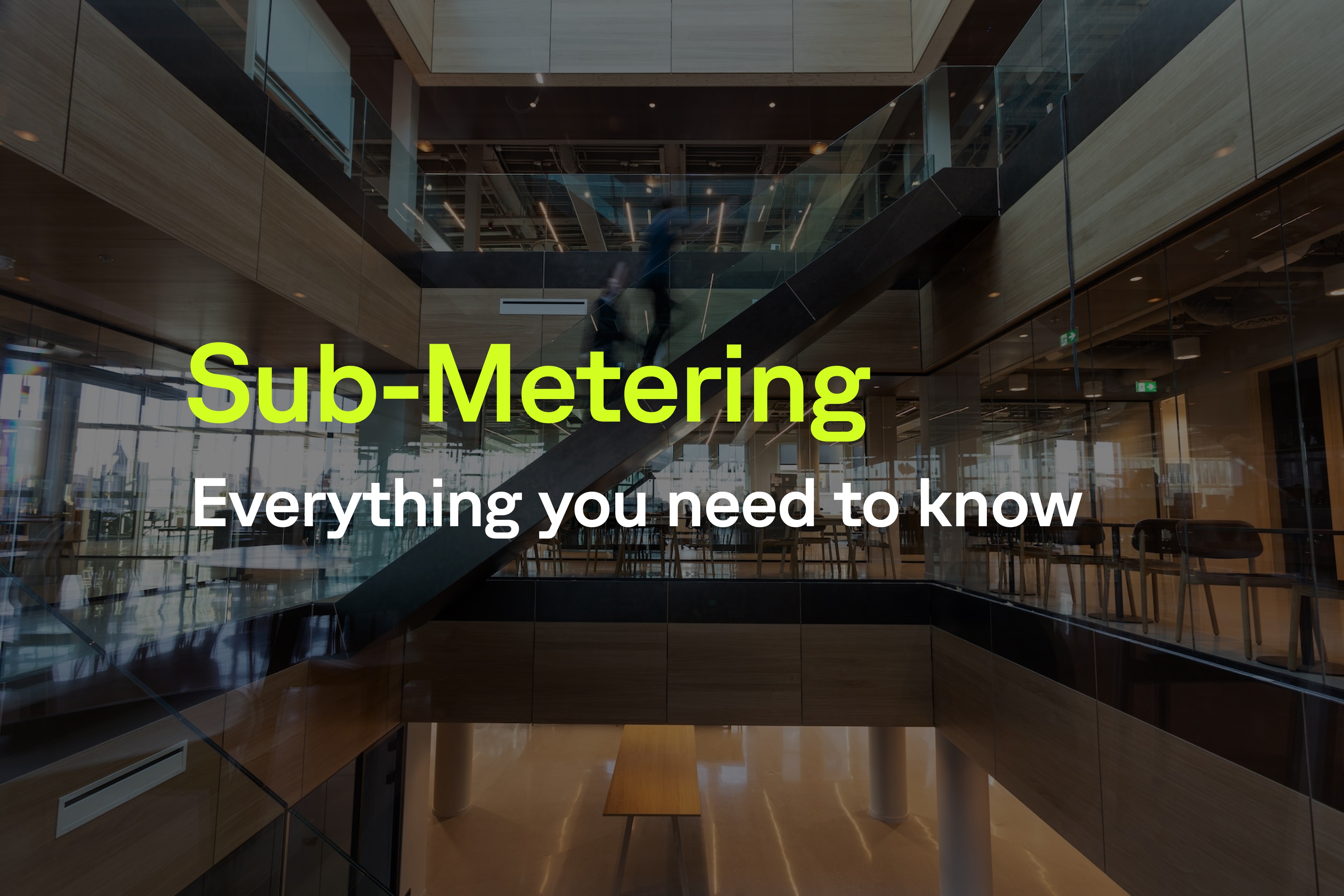IoT for Smart Energy Sub-Metering Plan: A Guide for Better Consumption Control

Are you aiming to efficiently manage your energy consumption and cut down on costs? If you're finding it challenging to organize your efforts, an energy sub-metering plan could be the solution to structure your approach. What exactly does it entail, and why is it important to implement? What tangible benefits can you anticipate? Explore, step by step, how to roll out an energy sub-metering plan and make well-informed decisions about investments.
What is an energy sub-metering plan?
An energy sub-metering plan is part of an initiative to enhance the performance of one or more buildings. However, it extends beyond merely measuring energy consumption. It serves as a strategic tool that provides a comprehensive insight into the utilization of energy within a building.
The primary stages of an energy sub-metering plan include:
- Measurement
- Data collection
- Analysis
- Optimization
By strategically deploying sub-meters and sensors, this plan offers a detailed analysis of various consumption points. It enables the identification of energy-intensive behaviours/actions or instances of resource wastage.
To sum up, an energy sub-metering plan aims to address the following questions:
- How is energy currently being utilized?
- Is the current energy consumption of my building justified?
- What areas can be improved?
- How can I reduce my energy expenses while maintaining or increasing performance and productivity levels?
- How can I sufficiently decrease energy consumption to meet regulatory obligations?
An important clarification: an energy sub-metering plan doesn't solely collect consumption-related data. It also integrates other specifics about the building and its activities to determine an overall performance level.
Read: Understanding the Energy Management System (EMS)
Advantages of an energy sub-metering plan: Towards managing energy expenses
The benefits are numerous, but the primary advantage of an energy sub-metering plan lies in understanding how your building operates, structuring improvement actions, and sustaining your gains:
- Identifying wastage and energy inefficiencies
- Pinpointing energy-intensive areas: prioritize actions on zones contributing the most to energy costs
- Highlighting consumption trends: adjust daily operations and/or anticipate peak periods
- Making informed investment plans: target and schedule improvement actions in order of priority, supported by numerical data
- Justifying a continuous improvement approach within ISO 50001 certification parameters
- Supporting reductions in consumption in compliance with government regulations.
How to develop an energy sub-metering plan for your buildings?
1) Initial assessment:
The first step in implementing a metering plan is to establish an initial assessment as accurately as possible. The goal is to understand how much your building consumes, what it produces, and how it operates (number of employees, opening/production hours).
This assessment is based on the information available before the implementation of the metering plan. At this stage, no sub-meters or sensors may be installed. In this case, gather all possible information: energy bills, production reports or revenue tables, external conditions, changes in workforce, periods of closure, etc.
The initial assessment provides an initial overview of the distribution of consumption and energy costs. If sub-meters are already installed, it's possible to detail consumption according to usage.
Conducting an energy audit is recommended to provide a comprehensive picture of your facility. It officially describes the performance and condition of your building before any improvement actions.
2) Identifying parameters to study
Building operation conditions
Based on the initial assessment, it's important to identify various parameters that influence your consumption. Here are some examples:
- Operating/opening hours
- External temperature
- Sunlight exposure
- Company workforce
- Efficiency of used appliances
Once identified, priority influencing factors can be modified (where possible) to accurately assess their impacts. This may require the implementation of value sensors or monitoring procedures.
Energy Performance Index (EPI)
The Energy Performance Index (EPI) describes the relationship between energy consumption and a given influencing factor. For example, you can compare your electricity consumption with your net profits or production volume (in the industrial sector). In this scenario, a decreasing EPI means that with equivalent or higher production, your consumption decreases, making your site more efficient.
During this stage, you'll also need to define the goals of your improvement process. Subsequently, you can deduce the most relevant EPIs to regularly study. Do you want to reduce operating costs, achieve regulatory compliance, or both? Do you have a specific target to reach, or do you simply want to reduce your environmental impact?
3) Selection of suitable measurement points and technologies:
The next step involves determining the technical means required to regularly calculate the performance indices you've chosen.
What data do you need to measure? In which areas? Through what means? At what frequency? These data will be of two types:
- Energy consumption, through sub-metering
- Values or quantities of influencing factors, via sensor installation or administrative tracking
The energy monitoring plan serves as a planning tool as well as a guide for locating installed measurement equipment. To identify areas for improvement, you must first be able to precisely measure numerous parameters over a significant study period. Gathering this information inevitably involves the installation of sub-meters (water, electricity, gas) and sensors that need to be accurately identified.
For each identified need, the energy monitoring plan specifies the measurement equipment used, its physical location, and the chosen communication protocol for data collection. Each piece of equipment is uniquely identified.
Did you know that communicating sub-meters are equipped with features that allow the automatic transmission of collected information? They thereby eliminate the need for manual meter readings.
4) Data collection and analysis
The measurements conducted as part of an energy monitoring plan allow you to analyze your site's energy usage over a significant period. The variation in influencing factors will help highlight potential energy savings.
For maximum efficiency, the process of retrieving measurements and the chosen analysis tools should be as straightforward as possible.
If you opt for an Energy Management System (EMS) software to collect and analyze your results, make sure to choose an intuitive solution that provides "visual" information: graphs, distribution diagrams, etc. Raw data from your measurement points will then be converted into a readable result, making it easier for decision-makers to utilize and understand.
Installing a Building Management System (BMS) associated with an EMS helps facilitate data retrieval and analysis. These connected solutions increase the frequency of readings (real-time monitoring without mandatory human presence) and maintain a history of values for a better understanding of the site. You also have the option to analyze a multitude of measurement points for a comprehensive study: a task that is difficult to achieve "manually."
The Wattsense Tower easily connects to all the equipment on your site, whether already in place or added later. It simplifies the deployment of your energy monitoring plan by collecting and centralizing data from all your measurement points. Visualize your data as bar graphs or diagrams on the Wattsense console, designed to offer optimal readability.

Our advice: Connected solutions like a BMS greatly facilitate the implementation of an energy monitoring plan. However, depending on the condition of your building or the age of your equipment, installing such a system may come later, after investing in more "urgent" energy actions. Although not a priority at the start of your initiative, it can represent an optimization opportunity in your continuous improvement process.
Thanks to the Wattsense solution, Cyrisea has deployed efficient electricity and DHW (domestic hot water) metering plans in collective housing units to ensure a fair distribution of rental charges and avoid any energy drift.

5) Implementation of actions and continuous improvement
The targeted implementation of improvement actions (and their execution) is the ultimate goal of an energy monitoring plan.
For instance, analyzing sub-metered consumption can highlight energy-intensive equipment or "phantom" consumption during off-hours. Observing consumption trends based on your company's strategic cycles may lead you to slightly adjust operating hours or consolidate certain tasks.
Priority improvement actions are those with the most significant impact on reducing your energy expenses, allowing you to decrease the previously chosen Performance Indices (PIs).
Note: Implementing an energy monitoring plan is not a one-time endeavor that concludes once actions are implemented. It's an iterative process that takes time and is part of a continuous improvement approach.
When a new action is integrated into your operations, a new study cycle begins to measure its actual gains. New improvement avenues are then suggested, leading to the implementation of further adjustments, which are themselves studied, and so on.
Interested in deploying an energy monitoring plan at your site? With its easy installation and universality, the Wattsense Tower can streamline your process. Connect all your equipment in just a few clicks and access all your data in real time. Request your personalized demo to learn more.
Want to learn more about the Wattsense connectivity solution?
Discover our solution


